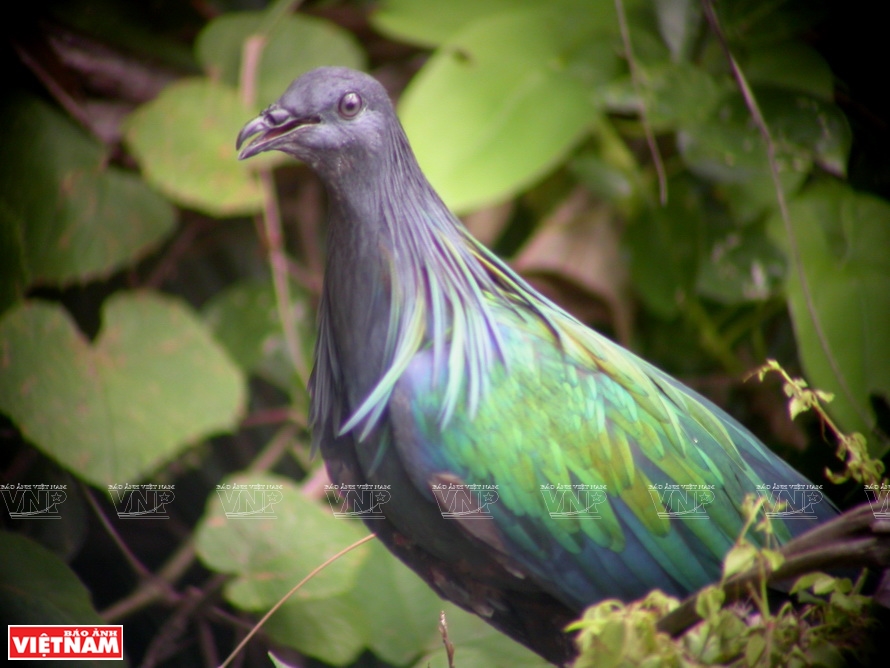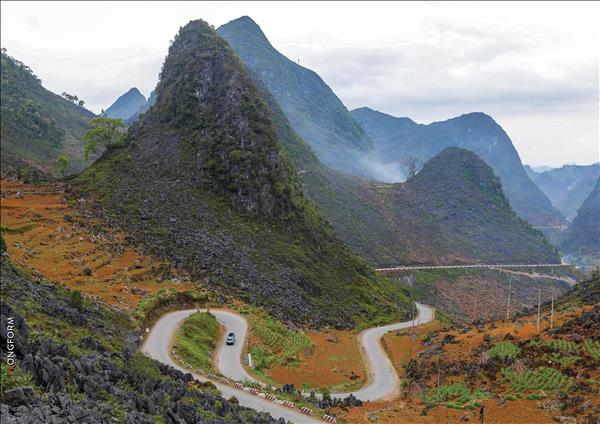A protected ecosystem
In June while the COVID-19 pandemic swept across the world, Vietnam’s initial success in containing the disease prompted many people to plan their summer vacations. Con Dao, regarded as “paradise in the East Sea” was among the top choices for domestic travelers.
| The sea surrounding Bay Canh island is strictly protected for research, conservation and development of marine biodiversity, including diverse coral reefs and other marine species such as clams, snails, fish, turtles, sea grass and seaweed. |
Con Dao National Park is the first and the most successful place to protect sea turtles. Tinh said that the park management board started its sea turtle conservation in 1994, setting up five ranger stations on islands where sea turtles often lay eggs. These stations function to study the ecological features of sea turtles using satellite tags attached to the reptiles, protect their nesting areas and move the nests to safe places as needed.
 Con Dao National Park is the first and the most successful place that protects sea turtles. Photo: Tat Son  Sea turtle eggs have an incubation period of about two months. Photo: Tat Son  Over 150,000 young turtles are released into the sea at Con Dao National Park each year. Photo: Tat Son  Checking the size and health status of a mother turtle. Photo: Tat Son  Rangers from Bay Canh ranger station patrol the mangrove forest. Photo: Thong Hai  
Con Dao National Park has a rich forest and marine ecosystem with rare and precious animals. Photo: Files
   Con Dao is known for its beautiful maritime ecosystem and coral reefs. Photo: Files Con Dao is known for its beautiful maritime ecosystem and coral reefs. Photo: Files |
| In 2014, Con Dao National Park was recognized as one of 2,203 wetlands of international importance by the Ramsar Convention Secretariat. Con Dao is Vietnam’s first marine Ramsar site and the sixth Ramsar site in the country. |
Every year from June to October, more than 400 turtles crawl up on the sands in Con Dao National Park to lay eggs. During peak season, every night between 10 and 20 turtles lay eggs ashore on Hon Bay island, 87% of which are hatched successfully. Over 150,000 young turtles have been rescued and released into the sea.
A striking tourist destination
| To reach Con Dao, visitors can take a four-hour trip by express boat from Cat Lo port in Vung Tau, or a 45-minute flight from Ho Chi Minh City’s Tan Son Nhat international airport. |
For those wishing to enjoy untouched nature while exploring history and culture, Con Dao is an ideal destination. The islands are not only home to gorgeous natural scenery but also cultural and historical sites. Recognized as a special national historical site, Con Dao was once a “hell on earth” where around 20,000 Vietnamese were imprisoned from 1862 when the French set up Con Dao prison, to 1975 when the resistance war against America ended.
|
The runway at Con Dao airport is one of the most special runways in the world because its two sides border the sea. Photo: Thanh Hoa
Motor boats take visitors to explore the small islands in Con Dao. Photo: Bao Uyen
 The villas of Six Senses Con Dao Resort sit up along the sandy beaches. Photo: Le Minh 
Tourists watch how turtles are released into the sea on Bay Canh island. Photo: Thanh Hoa
 Tourists explore the mangrove system in Con Dao. Photo: Tat Son
The beautiful roads running along the coast and mountains in Con Dao. Photo: Bao Uyen
Phu Hai prison, the oldest prison in Con Dao, is now a tourist attraction. Photo: Thanh Hoa

Tourists visit Con Dao museum. Photo: Thong Hai
 Tourists visit the “tiger cages” in Con Dao. Photo: Tat Son 
A model depicting a supervisor in Phu Binh prison torturing prisoners in “tiger cages”. Photo: Tat Son
Tourists burn incense sticks in Hang Duong cemetery at night to pay their respects to the late soldiers. Photo: Bao Uyen
- Locals and tourists come to worship at Vo Thi Sau’s grave in Hang Duong cemetery. Photo: Bao Uyen
Hang Duong cemetery, a resting place of tens of thousands of revolutionary soldiers imprisoned at Con Dao prison. Photo: Thanh Hoa
|
| For Vietnamese, Con Dao is the most sacred tourist destination in the country. |
With stunning scenery and cultural and historical values, Con Dao hosts millions of local and foreign tourists every year. It has emerged as an attractive destination where one cannot help hoping to come back.
Story: Son Hai - Photos: Bao Uyen, Thanh Hoa,
Tat Son, Le Minh, Thong Hai & Files
Tat Son, Le Minh, Thong Hai & Files







